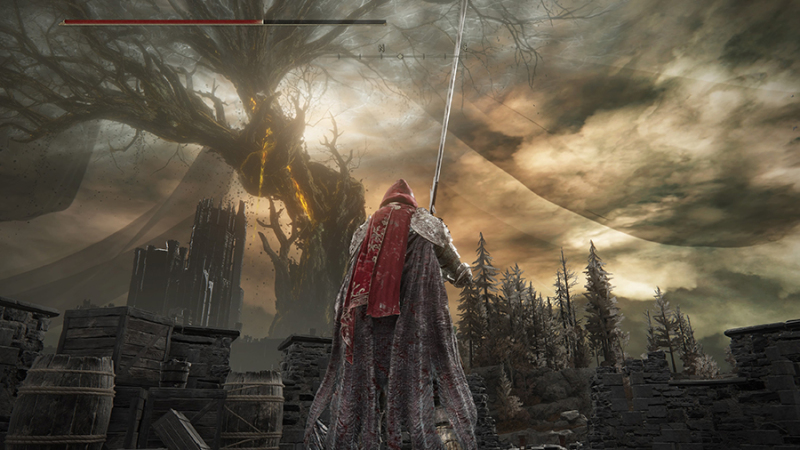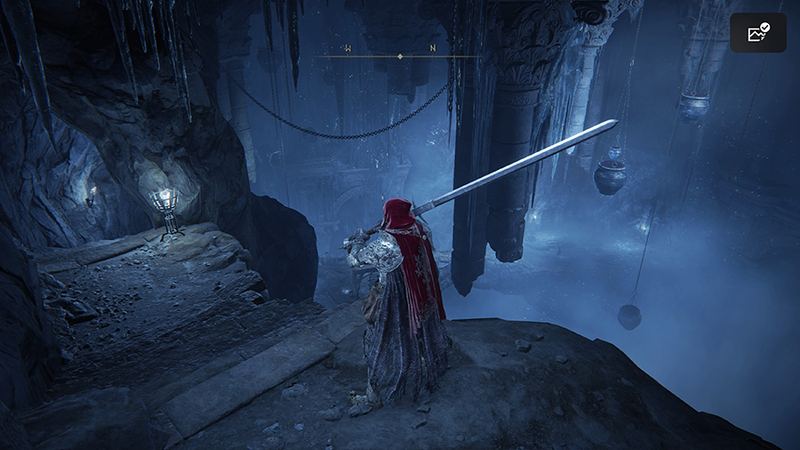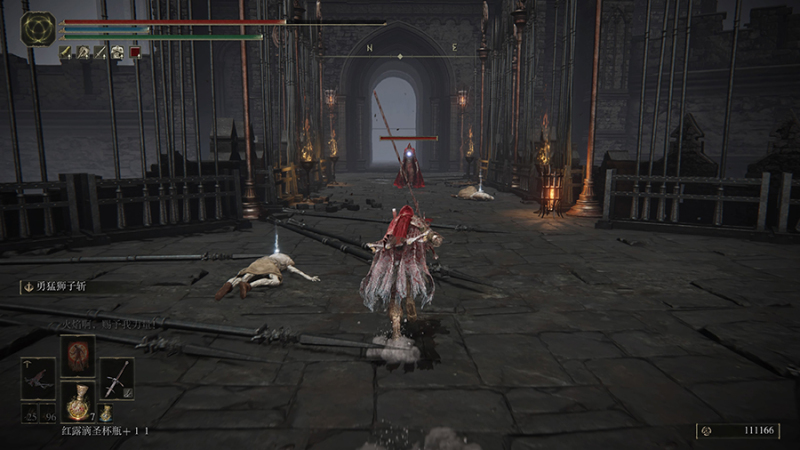"Tales of the Shire: A The Lord of The Rings" Release Date Announcement
1291
2024 / 09 / 26
It's been two years since the release of Elden Ring, and it's time for someone to complete the game while suffering from amnesia… Joking aside, I haven't set foot in the Lands Between since rushing through the first playthrough, leaving only a blurry memory of the story.
To prepare for the upcoming DLC, Shadow of the Erdtree, I had to undergo several hours of comprehensive rehabilitation. After defeating the “Lord of Blood” Mohg once again, the media review version arrived just in time. As a dual greatsword warrior who previously slayed every enemy with sheer strength, I confidently stepped into the Shadowlands.

Following Miquella's guidance, I arrived at the first area of the Shadowlands, the "Graveyard Plains." Riding Torrent out of the valley, the view opened up before me. The plains were filled with tombstones, but they were all untouchable spirit forms, reflecting the theme of shadows.
The first thing that caught my attention was a ruined wasteland ahead. Looking back, I saw a fortress blending into the mountains and the shadow city behind it, towering twice as high. The most striking sight was the Erdtree, piercing through the clouds from a tower hidden in the mist, its radiant light seemingly enveloping the entire Shadowlands.
Shadow of the Erdtree uses a familiar approach to guide Tarnished’s footsteps. What you see is what you get, with countless secrets waiting to be explored.

At first, I thought the DLC map was similar in size to Limgrave, as it appeared reasonable for an add-on DLC. However, after defeating the first major boss, three new areas requiring map fragments unfolded to the north, east, and south of the Graveyard Plains. The surprise of the map expanding several times over, reminiscent of the first time I defeated “Grafted” Godrick in the main game, came flooding back.
Although the Shadowlands may not seem large visually, the densely packed exploration and hidden elements make it feel as substantial as three major areas of the Lands Between. Moreover, the map is designed differently from the main game; highlands, plains, and underground areas are interconnected through terrain rather than being divided into separate regions.
Majestic spiked mountains, the roar of red lightning, and the cries of dragons echoed in the sky; the dark and eerie valley forests made you listen to breathing in the gray fog and brush past monsters. The dozen or so scenes of different styles are not simply stitched together at the edges; they use countless routes to layer, making exploration incredibly free, with something to catch your attention at every moment.

On the flip side, this highlights a flaw not seen in the main game—the difficulty in judging map information. The location I marked on the map could be anywhere in the depth of the scene, but the map only shows the surface, easily leading to misjudgments and wasted time.
The routes in each area are not as straightforward as in the main game. For instance, to reach the northern valley area, I might need to start from a canyon to the east and circle halfway around the map. To access the island to the northeast, I had to find an unassuming item on a cliff in another area.
The game does not provide sufficient route hints. I even felt the designers assumed players would meticulously explore every corner of each vertical position on the map. The feeling of circling the scene like a headless chicken, doing hours of futile work, is far from pleasant.

It’s not just the map that has plenty of content; the DLC also puts a lot of effort into enemy design. Besides familiar faces like Deathbirds, Erdtree Guardians, Demi-Human Queens, and Fallingstar Beasts, there are new formidable foes such as Beast Guardians, Flame Knights, and many humanoid enemies wielding new weapon types.
Regarding bosses, there are nine Remembrance bosses this time, roughly half the number in the main game. Especially noteworthy is how both cutscenes and combat performances have been greatly enhanced in these boss fights.
Take the Lion Dance boss, for instance. It not only embodies the aesthetic power of a “lion dance” but also switches between ice, lightning, and fire attributes, with each switch creating a highly oppressive change in the surroundings. I won’t spoil the other main bosses too much, but they all have deep ties to Miquella and are, of course, designed to be visually stunning.

Perhaps aware of the common tactics used by Tarnished in the Lands Between, the boss logic has been strengthened this time. For one, there’s no time to summon Spirit Ashes at the start of a battle. Even elite enemies with long health bars will launch a surprise attack the moment you enter the arena, and some main bosses will start with an overwhelming array of combat skills.
Additionally, their stats and poise have been significantly increased to counter Tarnished using wheelchair weapons. Each main boss is highly aggressive, with most of their moves having area-wide hit detection, making it difficult to stagger them.
I tried using the Blasphemous Blade, which allows for mid-range lifesteal and chip damage, but these bosses won’t be easily distracted by Spirit Ashes or NPCs. As soon as I used Taker’s Flames, even if the boss was in the middle of a combo, it would suddenly turn and hit me with the latter half of the combo. The current wheelchair builds generally have the disadvantage of large poise, and the main bosses in this DLC are designed to exploit this weakness.
While some casual players might find it overwhelming to fight without relying on wheelchair tactics, I believe that the real joy of Soulsborne games lies in observing the boss’s movements and devising strategies accordingly. The so-called “fighting each on their own terms” experience is a design flaw that contradicts the essence of skill-based mechanics, so I find this new boss logic to be a reasonable change.

Despite my reasoning, as a dual greatsword warrior, I must criticize the lack of attention given to physical builds by Miyazaki. It seems like the boss battles were designed with no consideration for players wielding dual greatswords. Aside from the area-wide hit detection mentioned earlier, most bosses have self-destruct mechanisms, hyperactivity, and area spells, and sometimes even unleash persistent area-wide magic attacks.
Finding the right moment to strike is already challenging enough, and in the brief moment I manage to land a hit, the boss often retaliates instantly. The sluggish sheathing animation of colossal weapons makes it nearly impossible to escape when the boss starts using self-destruct or area magic.
In the mid-game, I encountered another hyperactive boss who would leap across a field as large as the arena in the Radahn fight. Wielding dual greatswords, I could barely keep up. Whenever I managed to land a hit, the boss would leap to the other side, and to top it off, this boss had three health bars!
The fight wasn’t particularly difficult but extremely frustrating. Completing it left no sense of accomplishment, as if I had been part of a clown show—and I was the one being played.

The suffering of dual greatsword warriors extends beyond boss fights. Some levels also feature unfriendly designs.
To start with the good points, compared to the indoor levels of the Lands Between, the levels in this DLC offer more variety and are no longer repetitive underground prisons and skeleton caves. New levels like the Giant Jar Labyrinth, Sunken Ship Platforming, and the Waterlogged Ruin City are diverse enough, and new enemies bring fresh challenges and traps. These levels are enjoyable, even though they reuse some elements from previous games, but they still feel refreshing in Elden Ring.
However, some enemy placements in certain levels are downright frustrating. In one platforming section, several stone creatures continuously cast magic snipes at me from across the cliff while I sprinted across a field full of self-destructing stone creatures, with a small Deathbird trailing behind—this level of malice rivals that of Miquella’s Haligtree.
In a ruins level, every few steps, you’ll encounter a magic snake monster that snipes at you. Its magic doesn’t deal damage but directly inflicts a time-stop effect. After you’re frozen, a poison-spitting snake from hundreds of meters away will teleport and use a blood-draining grab attack. If you don’t dodge immediately after the grab, you’ll be hit by another time-stop grab attack. Even if you manage to approach the magic snake with precise movements, it won’t help much since the next stretch of the road has another magic snake ready to snipe you. If you’re unlucky, you might even aggro the next one ahead…
Miyazaki must really love the experience of the double-archer setup in Leyndell, doubling down on these purely malicious designs. These challenges don’t test your strategy; they test your luck and extreme skill. If you get lucky and the snake misses a few times, you pass—it’s not a good experience.

Lastly, I want to critique the new weapons and skills introduced in the DLC. There have been many leaks and early reports about them, so I won’t go into detail here.

The most memorable for me was the Spear of the Puncturer, whose skill is quite flashy and has a fire attribute. The final hit of its combo creates numerous spears around you that perform a piercing attack. When using a heavy attack, this spear can even be thrown as a ranged weapon.
Another skill, Brave Lion Slash, is an enhanced version of the Lion’s Claw from the main game. It can chain into a second slash, and there’s a damage window during the spin-jump. As a warrior, I also tried the new incantation, “Mesmerizing Flame,” which can conjure a large fireball that flies around the field. Once it touches the enemy, it explodes, applying fire damage and a dot.
Although these new toys may seem interesting, their effectiveness is questionable. The skill intervals of most weapons are too long, leaving you vulnerable, and some of the long-range new magic is too slow, often being interrupted by the boss’s rapid attacks, causing me to miss the timing to cast the new magic. While the visual effects are dazzling, they aren’t particularly useful.

At this point, I can’t help but feel a twinge of regret for the dozens of hours spent playing the DLC, as it seems more like it’s pandering to the tastes of certain “meta warriors.”
This is the end of the review, written in the author’s unique style, conveying their experiences and opinions on the Elden Ring DLC, Shadow of the Erdtree.

As a dual-wielding warrior who has previously conquered all enemies with a pure strength build, I entered the Shadow of the Erdtree with high confidence. However, I was thoroughly beaten and had to abandon my "romantic" approach, switching to a magic build to complete the game. This review may not fully capture the excitement.
"Elden Ring: Shadow of the Erdtree" offers substantial content, roughly half the size of the base game, with improved art, exciting performances, impressive actions, and dense exploration, making the DLC highly playable.
On the flip side, the game is rife with malicious design elements. Despite its three-dimensional open-world setting, the map information is insufficient. The new weapons are buried too deep without corresponding power, and the variety of levels is marred by irritating enemy configurations.
For pure physical builds, the game shows little consideration, resulting in frustrating experiences in both boss and regular combat.
The DLC has many enjoyable aspects, but it often seems intent on tormenting players—perhaps a trademark of FromSoftware.

Pros:
Dense, three-dimensional open-world exploration
Content volume comparable to half of the base game
Exciting boss battles
More diverse indoor level types
Cool and interesting new weapons
Cons:
Map information doesn't support the three-dimensional design
Some monster assets reused from the base game
Excessive, malicious enemy configurations
New weapons are hard to utilize effectively in the DLC
Many hyperactive bosses are unfriendly to physical builds
